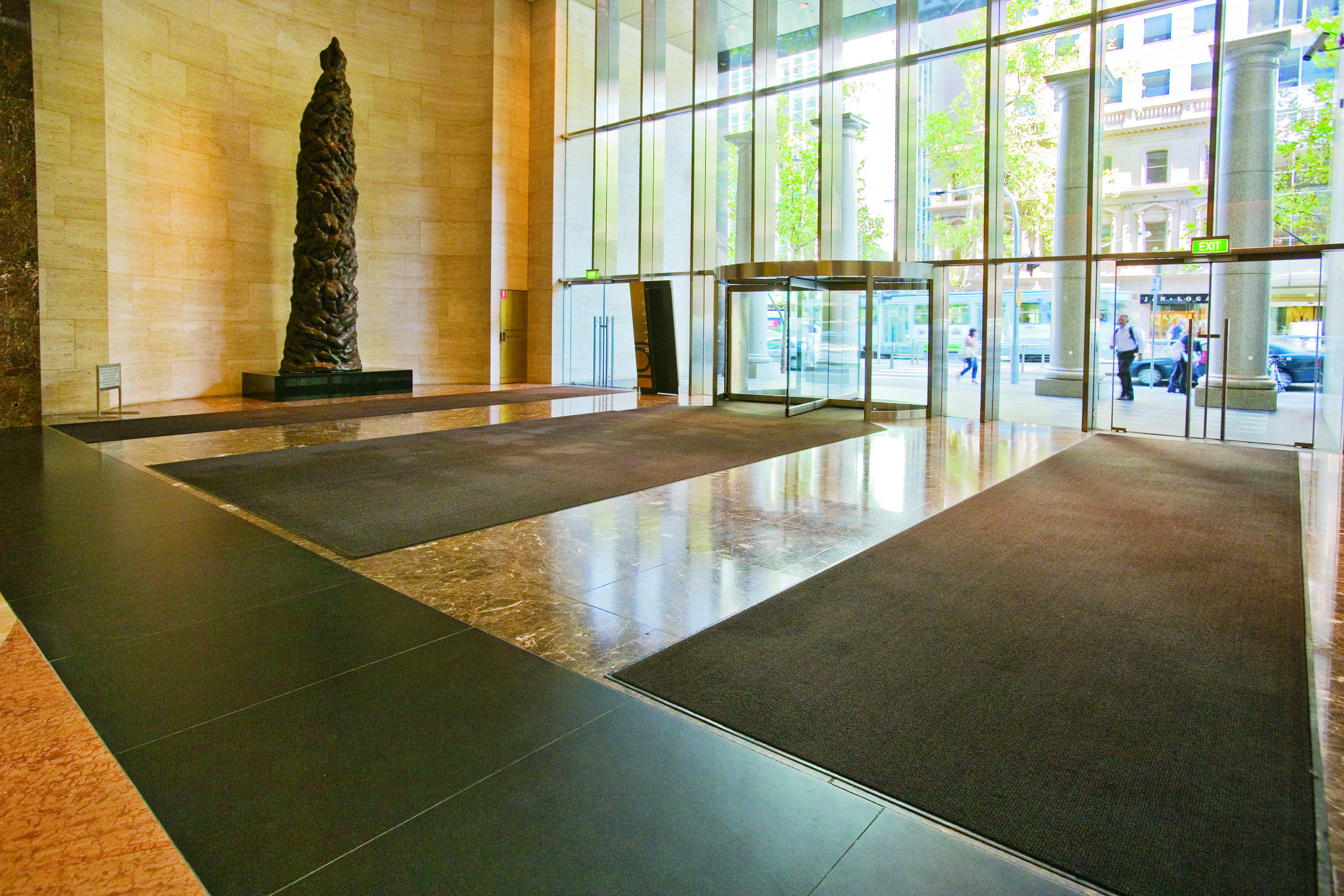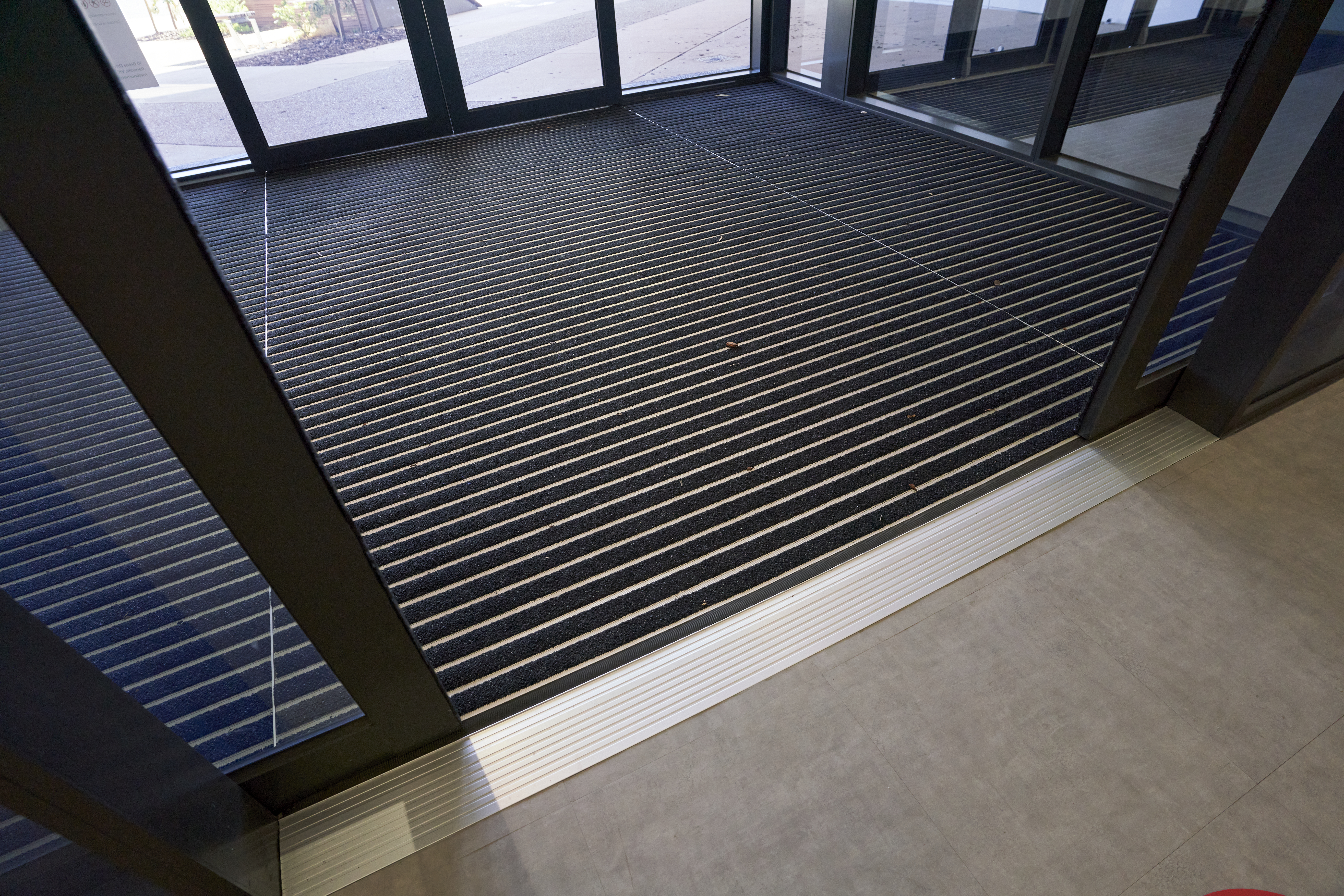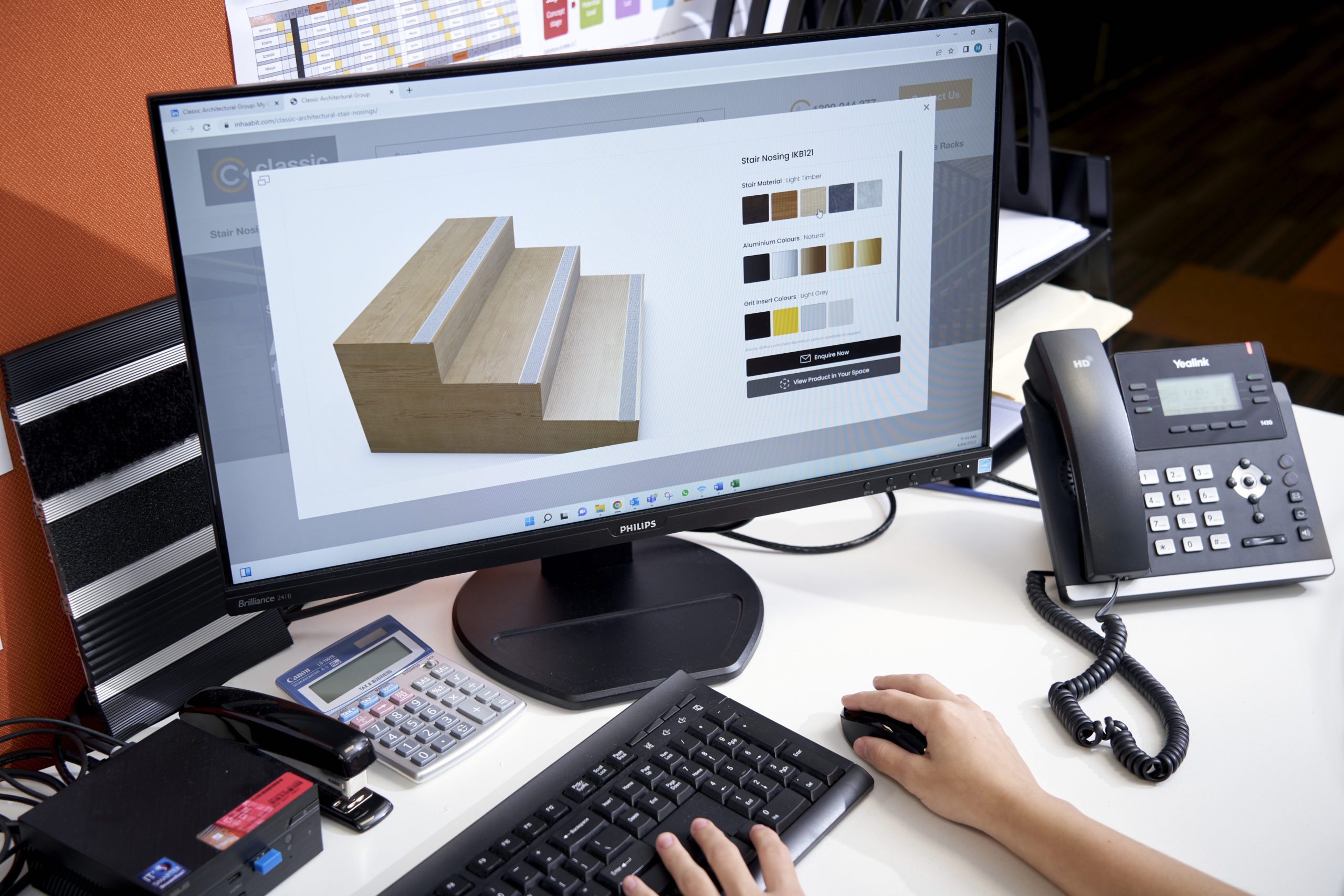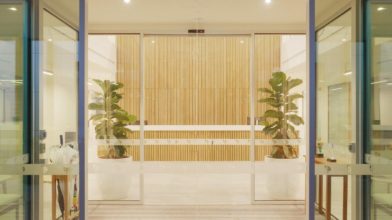Picture yourself walking into the lobby of a contemporary new office tower. Millions of dollars have been spent on chic finishes to ensure that the wow factor reaches new heights. A glass curtain wall creates a bright, welcoming reception area by allowing natural light to flood inside, making the gleaming marble that clads the interior surfaces shine. And then you look down and see dirty footprints all over the floor.
Now without being presumptuous, the chances are that the specifier or owner didn’t spend sufficient time selecting the entrance matting. Maybe they thought they could save a few dollars on that one detail, but that small saving could end up costing them in other ways because, people care about cleanliness. What they didn’t consider is that 85% of respondents in a recent Harris Poll said they wouldn’t visit a business if they read negative reviews about its cleanliness. Entrance matting lesson number one – a poorly chosen product can easily ruin the first impression of a building and cause both short and long-term headaches for the owner or tenant.
As with many things, the devil’s in the details, and the fact is that if you don’t select the correct entrance matting to suit the needs of your building, you’ll find yourself spending more money on cleaning the surrounding floor finishes and more time worrying about slip-and-fall accidents in your lobby every time it rains. This is no small matter, particularly for employers. According to the most recent figures from SafeWork Australia, trips, slips and falls in the workplace cost the Australian economy $11.6 billion in lost GDP, with each case costing an average of over $100,000.
The big question is, with so many entrance matting options available on the market, how do you find the best one to meet your needs? The answer is to always consider the six following points before making your selection…
1. Application
Considering the application and understanding how the matting will be used is crucial to you selecting the best entrance matting. Will it be indoors or outdoor entrance matting? Is it in a high or low traffic area? Does it need a rubber cushion backing to help quiet the noise of footfalls? What will users have on their feet at the ingress? Every building has different user requirements, and it’s important to understand who will be walking across that matting and what will be required to effectively clean their feet.
Think about a CBD office block. It will likely require matting that can withstand a high volume of both dry and wet foot traffic with a variety of shoe types, including stilettos. A footy club room on the other hand, needs to deal with muddy boots tracking dirt and mud inside. A senior citizens’ centre will need matting that is suitable for wheelchairs and other wheeled traffic like walkers or mobility scooters. A hospital may need matting that’s bacterial and fungal resistant. A shopping centre may need something suitable for a high quantity of laden shopping trolleys. The list goes on and on. It’s always key that you have a thorough knowledge of the application before considering the rest of the points.
2. Type
Entrance matting has two basic functions – scraping and wiping. Scraping removes dirt and other debris, while wiping removes fine particles and moisture. Some mats just scrape, others just wipe, while many types of matting are competent for both actions. An area where users will be tracking in water, moisture and other forms of wetness will require matting with great wiping action, whereas an entrance area that is fully exposed to the elements will require a scraper mat, often followed by a wiper mat indoors.
In some applications, staged matting is the best solution. Stage one could be external matting to remove dirt and grit, stage two would normally be an architectural matting combining scrape and wipe actions and then stage three would normally be a walk-off mat for thorough moisture removal. Make sure you have the right type of matting for your application. If it’s the wrong type it will be ineffective and in some cases, you may as well not have it there at all.
3. Size
Do you have enough matting to allow users to clean their feet satisfactorily? Your matting should cover the full width of doorways and entry areas, but it also should be deep enough to ensure shoes are clean and dry once inside. If you choose entrance matting with too short a depth, users will often only land one or two footfalls on it. The result is dirty, wet shoes tracking dirt and water onto your floor, which increases the risk of slips and falls and requires more time and money being spent on floor cleaning. There’s a real science behind this point.
The International Sanitary Supply Association warns that if your facility experiences up to 1,000 daily visitors over a 20-day period, you can expect them to track inside over 10kg of soil. It would take at least eleven metres of entrance matting to capture 99% of that dirt, the association estimates. If space is an issue and the entrance area simply doesn’t allow for a deep entrance mat in the preferred position, you’ll need to think about staged matting as mentioned earlier. Alternatively, think about how you can slow the foot traffic down so more footfalls land on the matting. Options for this include a revolving door, an airlock with two sets of doors and other design elements that will result in the creation of an unhurried entrance.

4. Aesthetics
Looks may not be everything, but let’s face it, they do matter. Selecting the right entrance matting will actually enhance the appearance of a building’s entry area. Anodised aluminium matting may match the style of a corporate lobby better than old-style ribbed carpet matting. In a smaller entry area, covering the entire floor in a modern carpet-tile style matting can provide a uniform look that may be more aesthetically appealing than multiple floor finishes. Always remember to consider the looks when designing your entrance as there’s no point in creating a beautiful lobby if you haven’t thoroughly thought through the appearance and placement of the entrance matting.
5. Longevity
An important consideration that’s often overlooked when selecting entrance matting is its endurance and longevity. How long is it that you plan on keeping the entrance matting in use for? Many corporate lobbies are refurbished every 7-10 years, but the chances of that happening in, say a school entrance or an apartment block, are slim. Although some applications may have less users, their entrance areas often don’t change for 20+ years! Check the warranties of the matting you’re selecting and consider how they tie in with the long-term plans for your entrance.
6. Budget
Don’t despair if the matting option that completes your stunningly designed lobby is beyond your budget. There are a wide range of different matting types on the market, and with a bit of research you’ll be able to find an effective solution that offers you great value. Take the time to learn about your options, and work with an entrance matting expert who can help ensure you’re getting the most out of your spend.
Considering these six easy steps will assist you choosing the best matting for any entrance. However, there’s always going to be specialist applications that require the help of experts. The most important step of all, is to call in an entrance matting consultant and get an on-site assessment. Sound professional advice, early on in the selection process, will definitely make your entrance area a safer and healthier place, and will save you from unnecessary problems and expense in the future.






